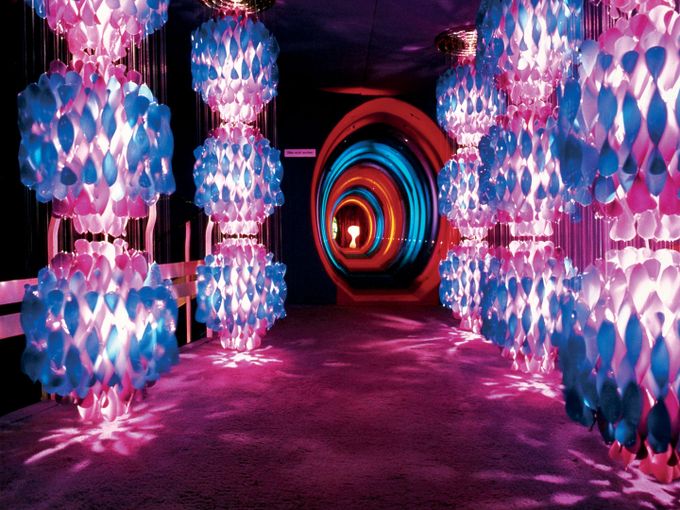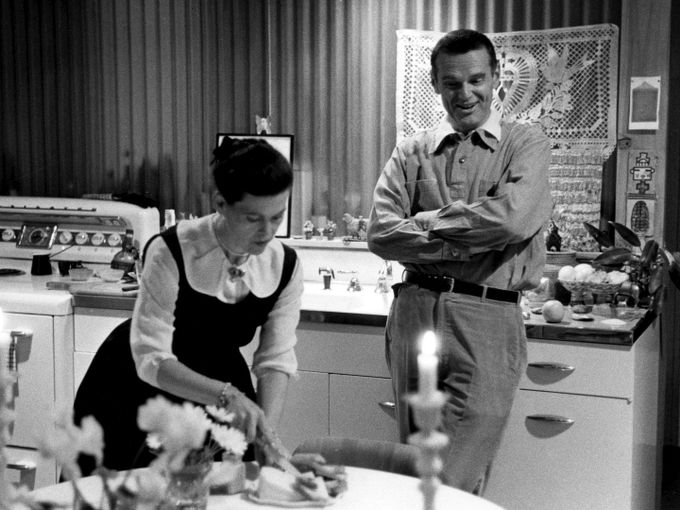ProductsChairsLounge chairsSofasOffice chairsChaises longuesStools & benchesSculpturesConference chairsAirport seatingStorage spaceMicro architectureDining tablesCafé tablesCoffee & side tablesDesksOffice furniture systemsConference systemsLightingClocksDecorative objectsCoat racks & wall shelvesTrays & vesselsNewBestsellerQuickly availableColour & materialAlexander Girard Antonio CitterioBarber OsgerbyCharles & Ray Eames George NelsonHella JongeriusIsamu NoguchiLounge chair finderOffice chair finderGift finderCare & repairSpare partsCare productsManufacturer warrantyVitra Circle StoresLounge Chair & OttomanHang it allInspirationsLiving roomDining roomHome OfficeChildren's roomOutdoorHome StoriesAugmented RealityColours & materialsHome SelectionWorkspaceFocusMeetingWorkshopClub OfficeCitizen OfficeStudio OfficeDynamic SpacesHospitalityAirportsEducationCo-WorkingHealthcareOur ClientsDestination WorkplaceA case for classicsOffice chairsDancing OfficeHome StoriesThe Home Selection fabrics from Kvadrat and DedarAugmented Reality - bring Vitra products into your homeSchool of Design: Showcase work and knowledgeA case for classicsColour & materialAn open house An office landscape - without walls or partitionsHigh comfort of low energyA leading space for a leading art collegeServicesCare & repairSpare partsCare productsManufacturer warrantyFAQ and contactInstructionsConsulting & Planning StudioVitra Circle StoresConsulting & planning in the VitraHausInstructionsOutdoor care instructionsRepair, maintenance, overhaul at the Vitra Circle Store Campus ProfessionalsCAD dataProduct factsheetsCertificatesSustainability reportInstructionsEcology informationpConPlanning examplesColour & Material LibraryCertificates and standardsHome SelectionTo the dealer loginOur ClientsMyntDestination Workplace: Visit our clients and partnersAnagram SofaMikadoTyde 2 on castorsACXDancing OfficeOffice chairsMagazineStoriesConversationsExhibitionsDesignerProject VitraA Capsule in TimeSeeing the forest for the treesRefining a classicMynt is a lifetime achievement to meA desk like a typefaceV-FoamSculptural IconsGames bring people together – just like good officesLet there be light!Social SeatingJust Do It!EVER GREENWhy the Eames La Fonda Chair was designedWhen a Sofa is more than just a Sofa: Anagram100% virgin wool – 100% recyclableAn archive is like a time capsuleVitraHaus Loft - A conversation with Sabine MarcelisA 1000 m2 piece of furnitureFrom a toy to an objectThe Eames Collection at the Vitra Design MuseumAbout the partnership between Eames and VitraVitra CampusExhibitionsGuided tours & workshopsFood and drinkShoppingActivities for familiesArchitectureYour eventConsulting & planning in the VitraHausPlan your visitVitra Campus appCampus EventsNewsVitraHausVitra Design MuseumVitra SchaudepotVitra Circle Store CampusOudolf GartenAbout VitraSustainabilityJobs & CareersDesign processThe Original is by VitraHistory - Project Vitra
Verner Panton
Colouring a New World
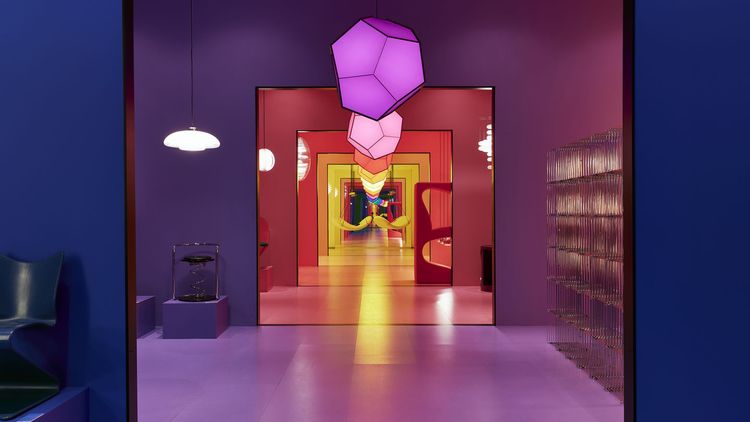
From 30 September 2021 to 14 August 2022, visitors to Denmark – or more precisely to the Trapholt Museum in Kolding (Jutland) – have the unique opportunity to view an extensive presentation of Verner Panton’s (1926–1998) work. The exhibition Verner Panton – Colouring a New World, which includes numerous loans from the Vitra Design Museum’s collection of Verner Panton designs, dazzles viewers with an explosion of colours.
The comprehensive programme was developed in close collaboration with Verner Panton Design AG – in particular with Carin Panton von Halem, the daughter of Verner Panton. Vitra asked Trapholt’s Head of Collection and exhibition curator, Sara Staunsager, and Carin Panton von Halem how it all came about and what they are most excited to share with visitors to Verner Panton – Colouring a New World.
The comprehensive programme was developed in close collaboration with Verner Panton Design AG – in particular with Carin Panton von Halem, the daughter of Verner Panton. Vitra asked Trapholt’s Head of Collection and exhibition curator, Sara Staunsager, and Carin Panton von Halem how it all came about and what they are most excited to share with visitors to Verner Panton – Colouring a New World.
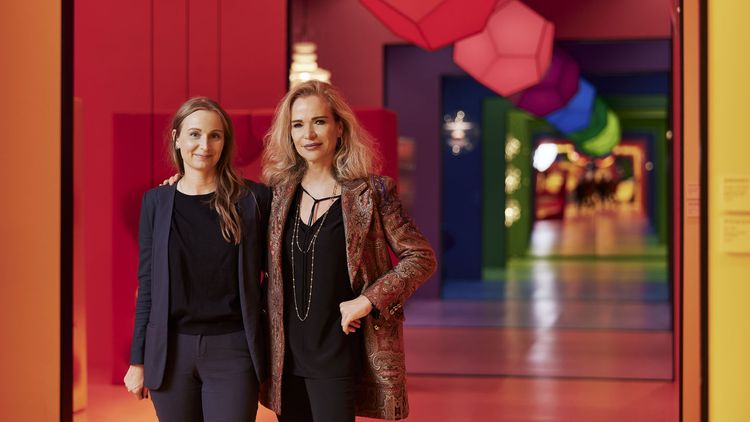
Trapholt was the initiating force behind the exhibition, developing the concept and curating the show. What was the motivation for the Panton exhibition – why today?
Sara Staunsager: As we emerge from the coronavirus crisis, it was important to mark the transition from darkness to brightness, and to visually demonstrate how we can be embraced by forms and colours. One thing’s for sure: this exhibition on Verner Panton and his colourful, socially-minded design is exactly what we need now. The exhibition is also a challenge to the minimalistic and cold ‘New Nordic’ style that has dominated the last decades.Carin Panton von Halem: Yes, the initiative came from Trapholt, and we immediately liked the idea! My father’s great wish was to inspire everyone to use their creativity, not just in their choice of colours but also to consider and perhaps rethink how to live and how to decorate their private homes. With his exhibitions and in his work, he absolutely loved to push and provoke people to be daring and try out something new, to get people to use their imagination.
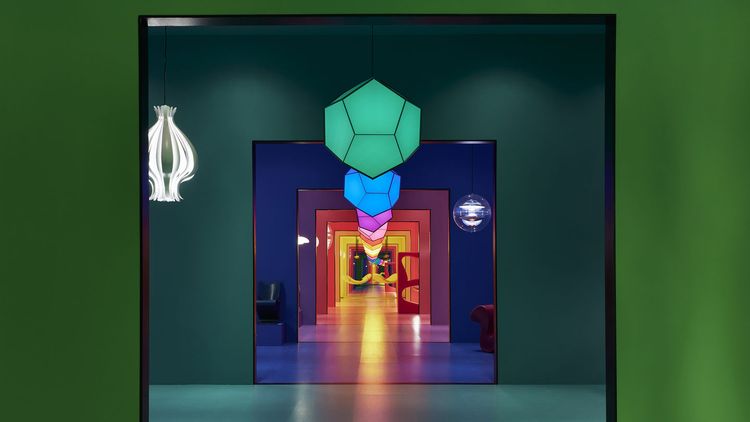
A central focus of Colouring a New World is the Light and Colour installation from 1998, which was also developed with Trapholt as the last major design project created by Verner Panton himself. This exhibition consisted of eight vividly hued rooms offering an impressive demonstration of Panton’s masterful use of colours. For Panton, the colour scheme was the most important means of imbuing an interior with a certain atmosphere and mood. The original eight rooms will be re-installed for Colouring a New World. How do you think these rooms will impact visitors? What do you think they will experience while walking through them?
CP: The same as back then – an astounding, breathtaking and unique colour experience. Just like in our colourful home, which also was a laboratory for perpetual experimentation. It was always very funny to watch people – friends and acquaintances – letting their inner child surface when they came for a visit.SS: Verner Panton’s immersive installation Light and Colour invites visitors to enjoy a unique sensory experience, perceived physically through both stillness and movement. Light and Colour is an exceptional example of how Panton expressed his belief in the significance of colour, light, material and form for our well-being.
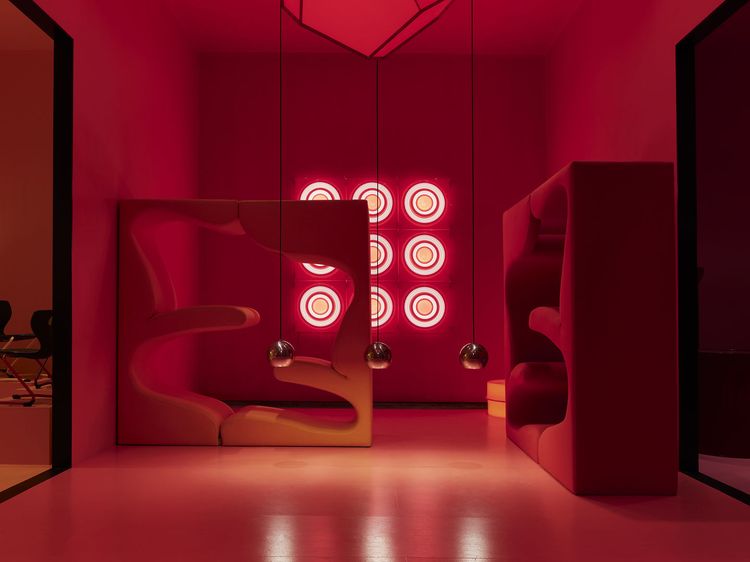

How did Verner Panton contribute to a new understanding of spatial atmospheres and colours?
CP: The period after the Second World War produced an incredible number of new materials and technologies. This was pure paradise for a designer with such a wealth of ideas. Especially in Germany, my father managed to make contact with a number of people, including Willi Fehlbaum at Vitra, who had the courage, curiosity and willingness to explore different ways of doing things. But also before leaving Denmark, he had wonderful cooperations with companies such as Fritz Hansen or Plus-linje and Unika Væv, who were early believers in Verner and his unorthodox ideas.SS: Verner Panton designed rooms as totalities, as holistic spaces in which colour first, and light second, were crucial to their atmosphere. Colours are used deliberately to evoke specific emotional experiences. Through colour, he induced specific physical sensations and a sense of well-being.
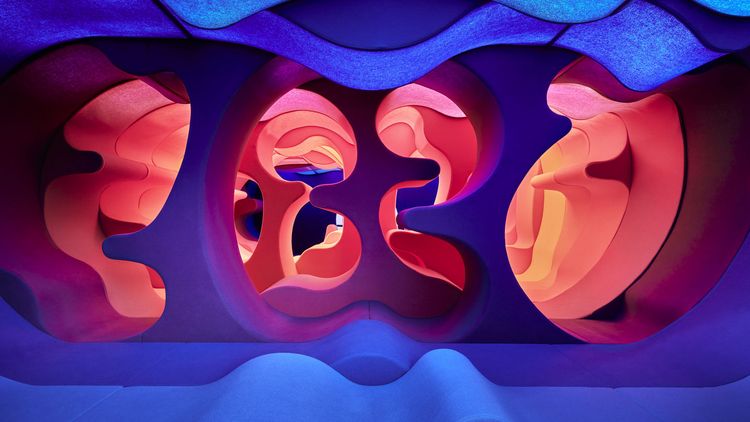
During the preparation and research for the exhibition, did you rediscover new works or other archival material that had never been presented to the public before, and which you wanted to share with visitors today?
CP: At Verner Panton Design, no! But the process itself allowed us to revisit so many of the original design objects, textiles and materials. This provided a wonderful opportunity to re-live these great and exciting memories from so long ago.SS: Verner Panton wrote a speech in spring 1980, which was first given at a furniture fair. Later he used the same speech for different occasions throughout the 1980s. It is the closest that Panton came to writing a manifesto, and it gives us an insight into his conceptual world. The speech is not new material, but the fact that it is put at the very centre of the exhibition has allowed us to engage with his ideas at a conceptual level not seen before.
What words would you use to summarise the work of Verner Panton?
CP: Bold, playful and fifty years ahead of his time!SS: Artists ask questions and designers answer them. Verner Panton did both!
Finally, this is a comprehensive presentation of Verner Panton’s expansive oeuvre. What works are you most excited to share with visitors to the exhibition?
CP: I’m very proud to present a major part of my father’s work – and hope everyone will have fun and find new inspiration.SS: Many people know of Verner Panton in connection with individual designs. Great as they are, they do not reveal how radical his ideas were, and still are today. In this exhibition, the totality of his concepts is on display. This is what I am most excited to show.
Publication Date: 17.1.2022
Author: Carin Panton von Halem, Stine Liv Buur;
Images: © Verner Panton Design AG. Photographer: Stjernegaard Fotografi. The Fantasy Landscape is a ‘Limited edition’ exclusively made for this exhibition.
